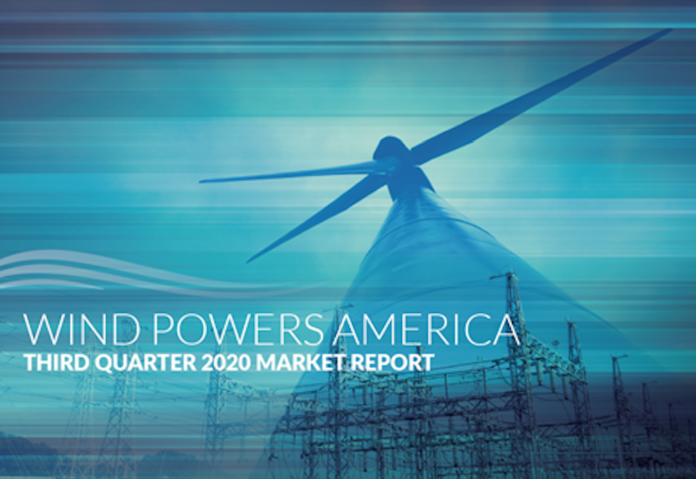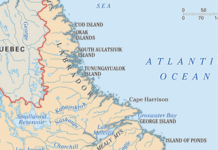The U.S. wind industry installed nearly 2,000 MW of new wind power capacity in the third quarter, setting a record for third-quarter additions and bringing the total U.S. capacity to nearly 112,000 MW, according to the recently released Wind Powers America Third Quarter 2020 Market Report from the American Wind Energy Association (AWEA).
The report reveals that U.S. wind is on pace for a record year, with installations through the third quarter up 72% over the first nine months of 2019.
“This progress during the third quarter is a tremendous testament to the more than 120,000 wind workers in the U.S. who are on the ground every day striving to bring more clean, affordable electricity to communities across the U.S., even in the midst of a global pandemic,” says Tom Kiernan, CEO of AWEA. “Challenges still remain, but the U.S. wind industry will continue pushing to add jobs and investments to the economy as we look toward a cleaner, more reliable and more prosperous energy future for our country.”
Ten new wind projects totaling 1,934 MW started operations across nine states during the third quarter. Texas led the country with 687 MW of new wind projects installed, followed by Colorado (496 MW), Illinois (200 MW), Iowa (168 MW) and Indiana (147 MW). Of particular note, the two largest single-phase wind projects in U.S. history came online during the third quarter: the 525 MW Aviator Wind project in Texas and the 496 MW Cheyenne Ridge project in Colorado. There are now 111,808 MW of operating wind power capacity in the U.S.
Wind power development and construction activity remained strong during the third quarter. Project developers announced 2,420 MW in combined new development activity, with projects totaling 972 MW starting construction and an additional 1,448 MW entering advanced development. At the end of September, there were 43,575 MW of wind power capacity in the near-term pipeline, including 24,355 MW under construction and 19,220 MW in advanced development. Construction activity ticked down 3% from the previous quarter, primarily due to a large volume of projects reaching commercial operation, but remains up 4% from the same period in 2019.
The offshore wind market continued to advance in the third quarter. Coastal Virginia Offshore Wind, slated to be the second offshore wind project in the country and the first in federal waters, completed reliability testing in September and is expected online before the end of the year. Offshore wind makes up 47% of projects in advanced development, with developers planning to bring 9,100 MW online by 2026.
Despite this progress, significant hurdles remain as the wind industry continues working every day to add jobs and investments to U.S. communities during this challenging time. Wind developers continue to report difficulty raising tax equity for their projects, as economic uncertainty is restricting the supply of tax equity in the U.S. financial markets. AWEA and the wind industry are working with Congress and other renewable energy leaders to address these and other impacts of the pandemic and to keep contributing strongly to the U.S. economy at this moment when those jobs and investments are needed most.
Leadership at the local, state and federal level, including forward-thinking policies to increase our country’s use of clean electricity, will be vital as U.S. wind power works to expand its support for local communities and to deliver clean, reliable and affordable power to U.S communities today and in the years to come. This policy leadership is especially important for the offshore wind industry, the country’s newest major energy source, which is poised to deliver up to 83,000 jobs and $25 billion in annual economic investments within the next decade.




